Exploring the harsh heritage of Scotland’s far north
Part 1 of a walking trip on the eastern part of the North Coast 500
A blazing sphere lifts out of the sea fog into a vermillion sky, shooting a brilliant beam across the sea towards me. Another glorious day begins. The water is riffled by a light easterly wind blowing onshore. I trot along the shore to photograph the sun framed behind the Mermaid of the North statue, perched on a rock.
Breathing in the morning freshness, I realise how lucky I am to have come to the far north of Scotland in such a settled spell of weather. Cold nights and dazzling days of almost constant blue skies, are calm enough to encourage me to indulge in my own mermaiding.
It was tempting to linger longer, but I am back home now and reflecting on ten days spent between Inverness and John O’Groats. The purpose of my trip was to check and revise part of a walks guidebook, but in the process I encountered landscapes and culture shaped by the distinctive history of this region.
If I had come here three centuries ago, I would have found a very different place with the inland straths and dales filled with scattered farmsteads. Now the interior is virtually empty, with most of the settlement concentrated in villages along the coast.
The change started after the failed 1745 Jacobite rebellion when the traditional Highland clan way of life was suppressed and new owners acquired much of the land. For the first time profit became the motivating force. The old system of communal subsistence farming produced little surplus for the landowners, who saw they could make much more money from large scale sheep farming.
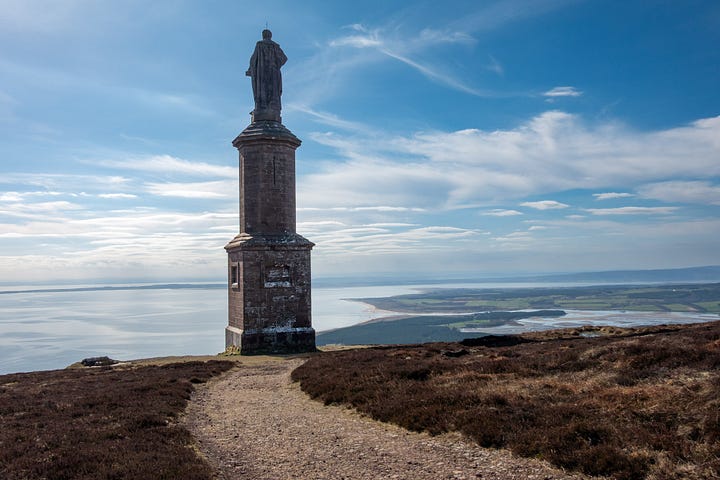
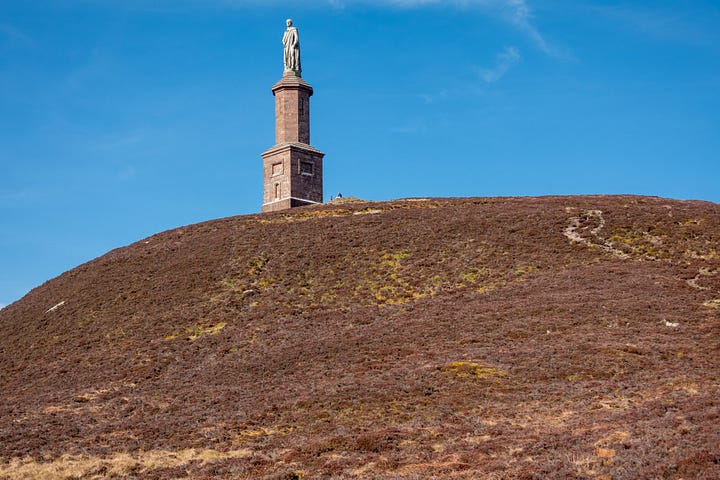
Thus the Highland Clearances began
They were particularly brutal for the tenants who were removed from vast swathes of land owned by the Duke of Sutherland. Many had their houses burnt to force them to move down to the coast. Here it was hoped they would engage in the booming industry of herring fishing, using harbours improved for the purpose.
But as with sheep farming, where flock masters and experienced shepherds were brought in from the south to develop this new style of land use, skilled fishermen came from existing fisheries. For crofters who had lived inland all their lives, the sea was an alien and dangerous place. Those locals who were employed in the herring industry mainly worked as curers, coopers and labourers, with the women specialising in gutting the herring.
Many people had no means of making a living and had no choice but to leave the area, with hundreds emigrating to the colonies where there was a hope of obtaining a plot of their own. This wrench from land, homes, kith and kin is poignantly captured by The Emigrants sculpture at Helmsdale. The father is guiding his daughter onward towards the sea, while the mother, carrying a baby, looks back longingly at the land they are leaving.
Museums
This background is brought to life in Timespan, Helmsdale’s Heritage and Art Centre. It illuminates human history going back from the herring industry and Highland Clearances through the burning of witches and shooting of the last wolf in Sutherland, to Pictish mythology and the prehistoric chambered cairns that dot the landscape.
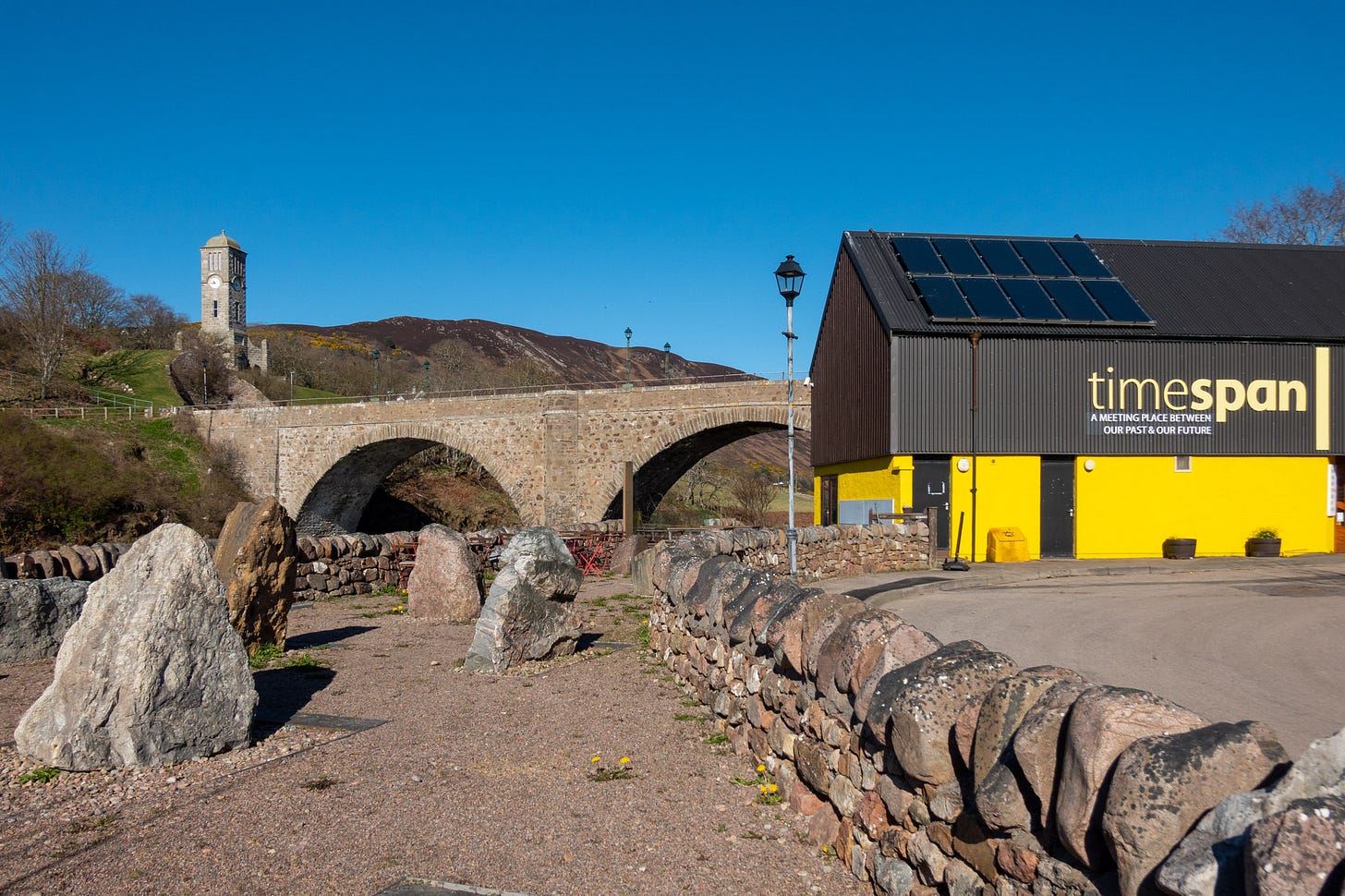
Another venue that provides a fascinating interpretation of local history is Dunbeath Heritage Museum, further north up the east-facing coast. This was the birthplace of Scots author Neil Gunn, famous for his stories, such as Highland River, which evoke the crofting way of life and the upheavals experienced.
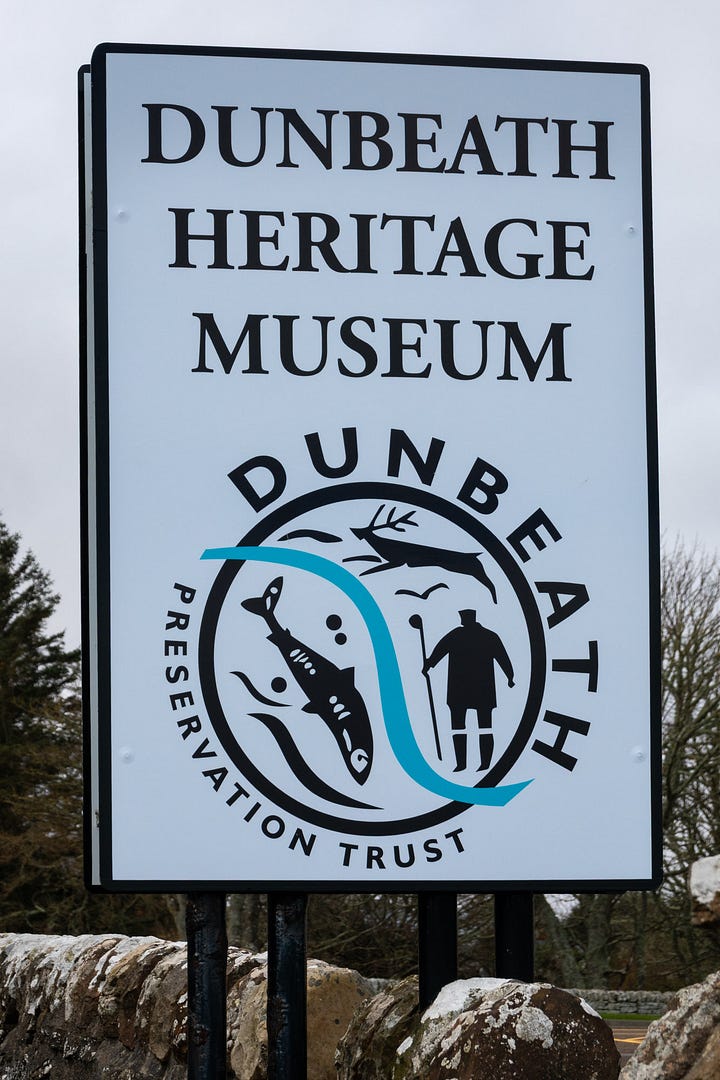
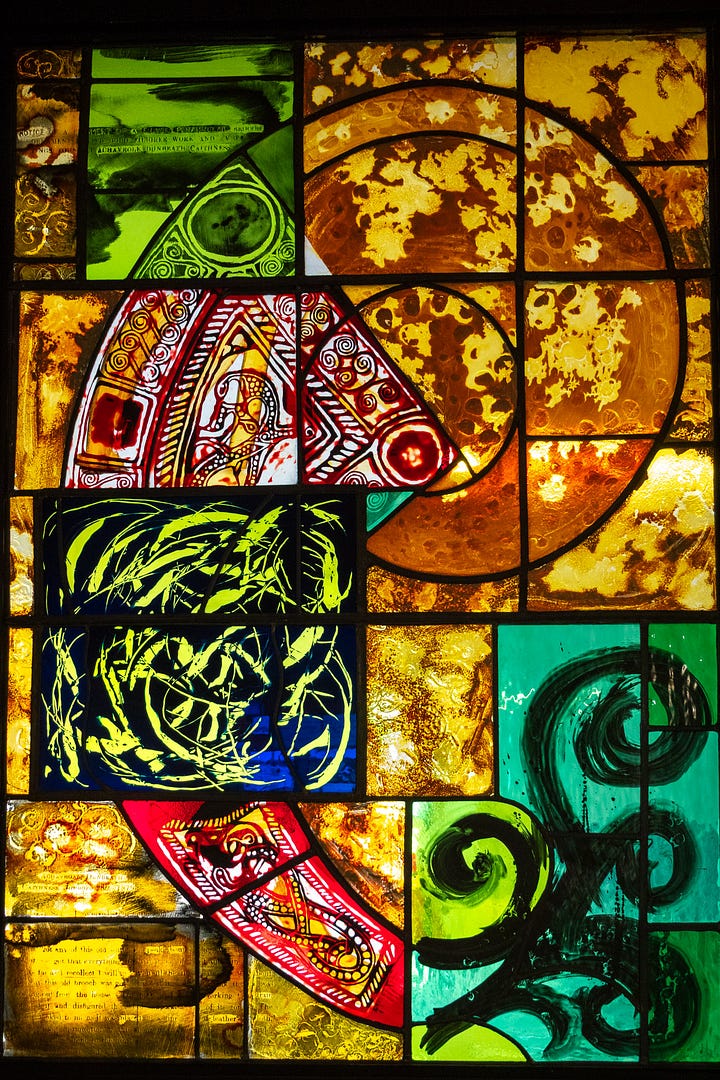
In Dunbeath I spent my first night at Dunbeath Harbour, where the Dunbeath Preservation Trust are happy for motorhomes to stay in return for a donation towards the upkeep of the harbour and surrounding area. I parked at the end of the road, by the salmon bothy, with a view over the bay to Dunbeath Castle. The Trust, a local charity, keeps the area spotless and includes imaginative touches such as picnic tables with boards for chequers and snakes & ladders built into them.
The next night I was booked into Inver Caravan Park, where I could freshen up after my longest and toughest walk of the trip. To do that I drove to Braemore at the end of the public road up Berriedale then climbed three rocky hills. I started past the foot of Maiden Pap, a highly descriptive name for a hill like a pert breast with a nipple on top. The long walk in took me to the highest summit, Morvern, with a detour beforehand to visit the prehistoric homestead of Dail-a-chairn. This Iron Age aisled house, built on a mound above marshy ground, has several upright pillars still standing.
It was a steep climb across rough screes to the top of Morvern, the highest hill in Caithness. The view stretched across deserted flow country to the north coast, with the silhouette of Hoy, the highest island in Orkney showing through the haze. As in some of my other photos, a grey pall from distant wild fires forms a band across the sky. From there I returned over lower Càrn Mòr then across a couple of miles of boggy moorland to traverse the summit of Maiden Pap.
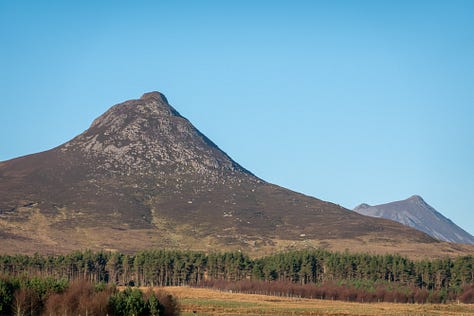

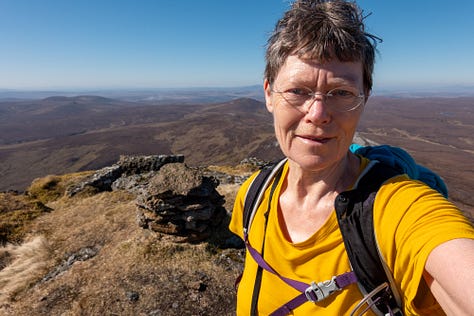
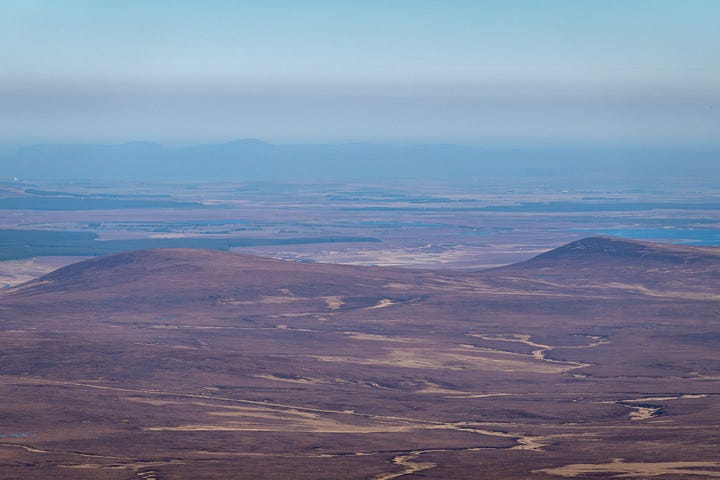
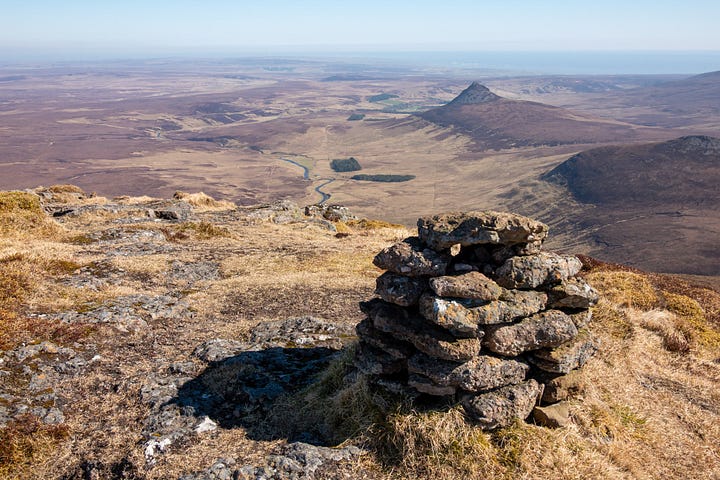
The landscape all around me was still very much dedicated to sheep farming – a place where no trees can grow, except for small plantations enclosed by fences. But this form of land use is much less profitable now than it was when first introduced in the late 1700s and early 1800s. While on this trip, I was reading Two Hundred Years of Farming in Sutherland by Reay D G Clarke, whose ancestors farmed further north still, around Loch Eriboll near Durness on the north coast.
As he describes, keeping thousands of sheep on the land year round soon degraded the fertility of the soil, leading to poorer returns and more disease. Fertility had been built up and maintained through centuries of transhumance, where cattle were herded on the hill land in summer but brought down to the settlements in winter to graze on land where crops had been harvested. That method gave the ecosystem a chance to recover, with sweeter grasses and clovers encouraged to grow, rather than the coarse vegetation now found. Within 50 to 100 years of sheep farming, that fertility was lost.
Next week I will continue an account of this trip, visiting places where greater biodiversity can still be found, with walks further south in Easter Ross.











Beautifully written! You brought Scotland to life across the world for me. Looks like I've got to start planning my trip there :)
Well, it’s clear that it’s time for change again - wouldn’t it be good if this time, ordinary people were to have agency. On another note, my recent photos from a North Wales research trip have a similar brown haze across the horizon from wildfires. I wonder whether we’ll be able to tell which year books were researched in from the pictures…